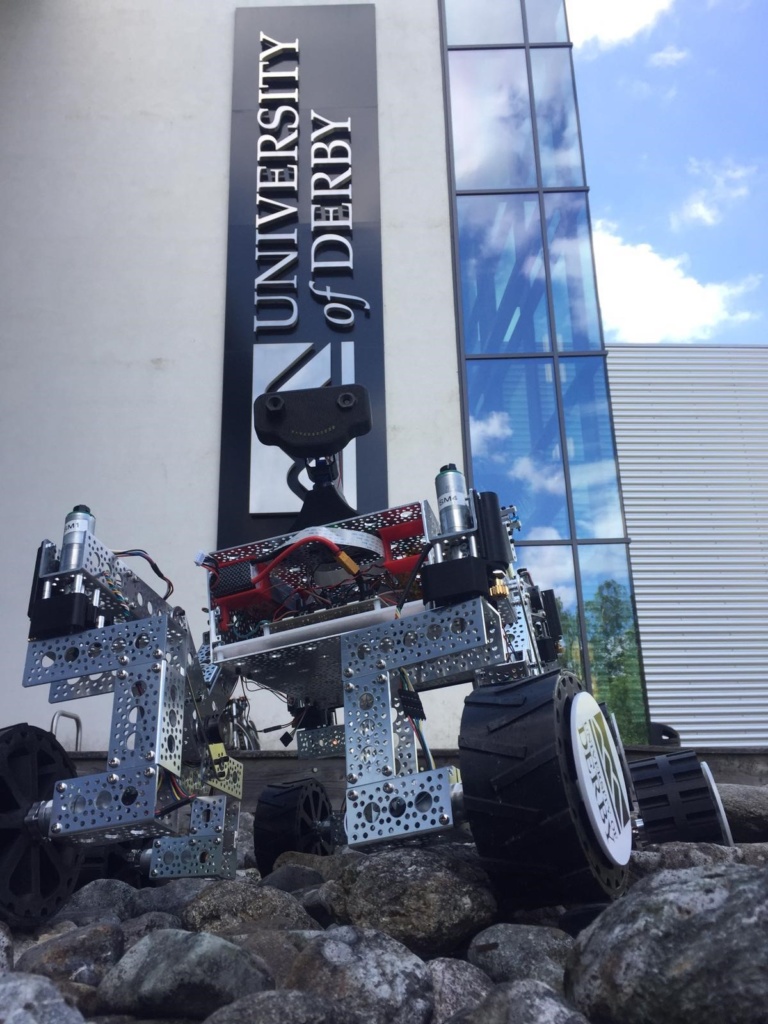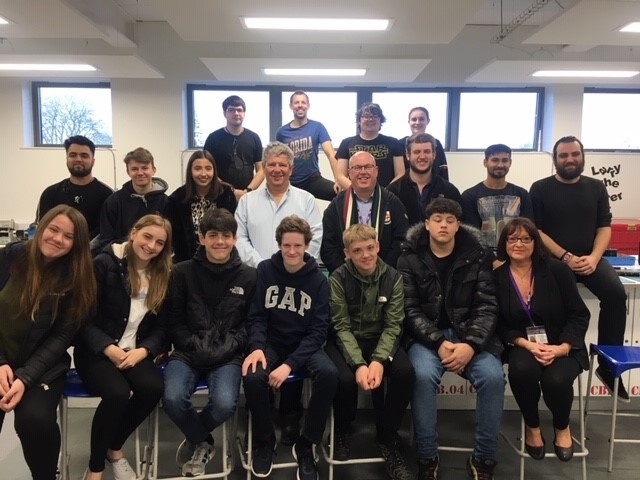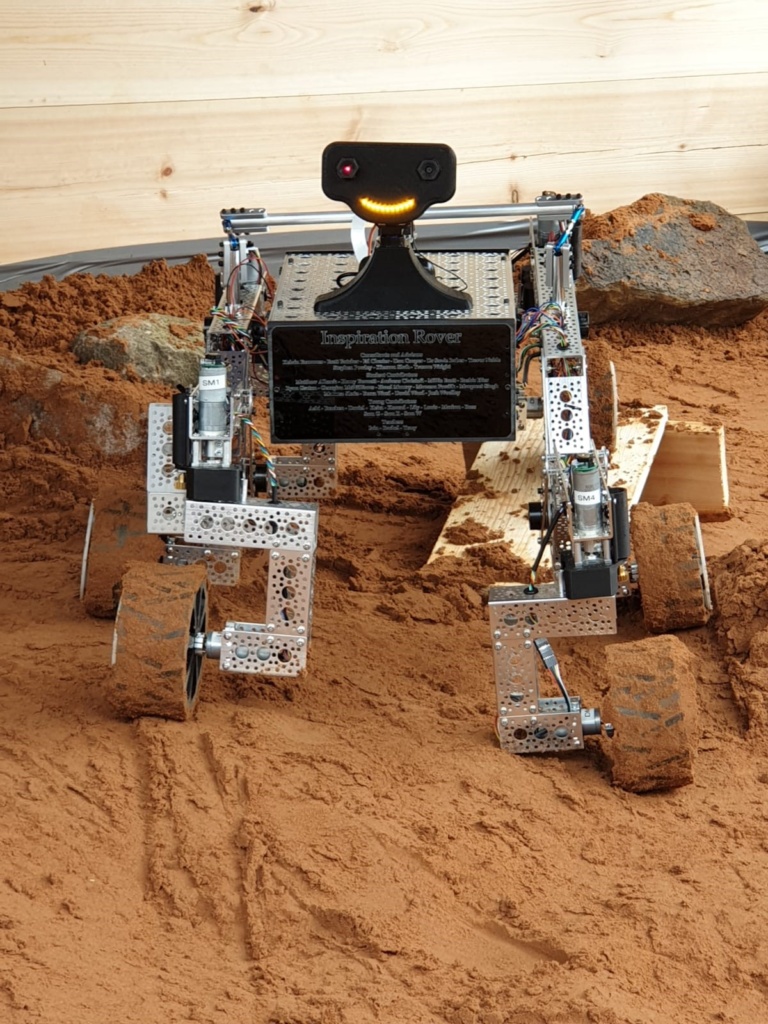
A collaborative educational outreach programme has been developed to help young people build their confidence and engage in practical engineering work. Some of the young people involved have had challenges in, or even had to leave, mainstream education, making this engagement extremely valuable.
The project, Inspiration Rover, which was led by mature student Henry Bennett from the University of Derby with support from fellow undergraduates, academics and alumni saw the young people develop a scale model of the Mars Science Laboratory Rover using a design from NASA Jet Propulsion Labs.
The aim of the initiative was to build the confidence of the young people and help them to engage in practical engineering projects.
The project was designed to cover three phases; phase one involved the children entirely over a structured six-week programme. Using computer-aided design, laser cutting and 3D printing technology, the participants began the six-week programme to construct the Rover at the University’s Institute of Engineering and Technology.
In weeks one and two, the young people spent their days at the University’s Institution of Engineering and Technology to understand how to use the computer-aided design software, along with the software required to 3D print components for the Mars Rover, such as the wheels.
Weeks three and four introduced the basics and principles of electronics, including a task to create their own circuit boards in which they could take home. In the two final weeks of phase one, they worked with the University engineers and electricians to assemble the parts into the scale model and see how all of their efforts would be put to use.
Learning the basics of electronics to create their own electronic circuit boards, the group then worked with University engineers and electricians to assemble the vehicle.
The project aimed to depict the whole journey into engineering, and to show that although a challenging subject, it can also be fun—which worked. At the end of phase one, around half of the children wanted to go onto to STEM roles, and three even changed their GCSE choices to include an engineering-related subject.
Phase two of the project was to ensure the Rover could move and function parallel to the real robot. The group proved it could do just that when the Rover was successfully unveiled to the public on Robot Day at Derby’s QUAD arts centre. Feedback from the children demonstrated the pride and sense of fulfilment gained from such an incredible accomplishment.
Projects like these can help to guide and support young people with non-traditional methods of teaching and schooling, unlocking doors and expanding their knowledge on future options available.

A student’s perspective: Louis Wright
I am a student in Year 9 at Netherthorpe School, which is a secondary school in Derbyshire. In February 2019, our Head of Year advertised the opportunity for us to apply to be involved in a STEM (science, technology, engineering and maths) project.
The project involved working with engineering students and academics at the University of Derby to build a prototype Mars Rover or Robot. Initially, I didn’t know whether this was for me because I hadn’t chosen engineering in my GCSE option choices—mainly because I didn’t really know what it was. However, the opportunity sounded really interesting so I decided to apply anyway.
Fortunately, along with seven other students from my school, I was chosen to take part. We were split into two groups and individually visited the University every other week over six weeks. The thought of attending the university was exciting and when we arrived, I was not disappointed. We went into a room called the ‘MakerSpace’; a place where students could go to use the 3D printer, laser cutters, CNC machine (computer numerical control machine), computer programming, and CAD (computer-aided design) software. It was a nice place to develop any ideas or projects. Instantly, we were spoken to and treated like adults by the whole team, which felt really good.
We were introduced to the engineers who were our mentors over the weeks – many of them were in their last year at University. They supported us to use the CAD software, to design our robot wheels, to use 3D print components, to create a circuit board using soldering techniques and finally, to assemble the parts into a model.
We worked with four other students from across Derbyshire who currently had a TMP (Tailor Made Package) because, for different reasons, were finding it difficult to attend school.
It was great to work alongside other young people and adults with different interests and a variety of experiences. Over the weeks, we started to feel like a team, all with the same purpose and direction.
Every week I looked forward to attending the sessions. They allowed me to get a taste of what university would be like, but also encouraged me to try something new. We had different talks from engineers who were from the Space Industry and that was brilliant. I began to understand that trying new things creates new opportunities, but also that having and developing skills is what employers want. On reflection, in school I don’t think we make the links as to why we need to learn about the subjects we do every day in lessons. Often I say to myself ‘what is the point?’ I think if teachers made it more apparent about the connections from lessons to jobs it would help us to make sense of the ‘why’.
In the last week of the project, we visited the National Space Centre in Leicester to celebrate our achievements. We really wanted to contribute to this part ourselves, so we raised money for the bus costs by hosting a bake sale in school.
The visit to the National Space Centre was amazing! To see the robot fully built felt rewarding and hearing Dr Suzie Imber was really inspiring. Dr Imber is the Co-Investigator on the Mercury Imaging X-ray Spectrometer instrument on board the BepiColombo spacecraft currently heading to Mercury, and winner of the BBC programme Astronauts: Do You Have What It Takes?.
Our final activity from the project is to develop lessons from a resource called Exomars, which will be available free to primary schools on the STEM centre website. We will also be delivering STEM lessons to our local primary schools hopefully to inspire a younger audience too. I realise now how much time it takes to develop a good lesson, so well done all you teachers out there!
In September we will be sharing our learning experience with our parents and receive a Level 1 NCFE (Northern Advisory Council for Further Education) Investors in Quality Certificate for completing our Derbyshire Voluntary Passport and an identification badge.

I hope our experience has inspired you to think outside the box because the experience really inspired me!
You can see our Inspiration Mars Rover model at The National Space Centre, where it will live for a year before it goes out to tour and do outreach work.
To make the project possible, the Inspiration Rover team enlisted the help and support of multiple partners including the University of Derby, the National Space Academy, IET TV, UK Space Agency, Catena Space Engineering and Derbyshire County Council, with funding from the Institute of Engineering and Technology.
Louis Wright is a Year 9 Student at Netherthorpe School. For more information on the Inspiration Rover project, visit www.inspirationrover.com
Register for free
No Credit Card required
- Register for free
- Free TeachingTimes Report every month